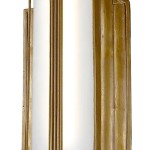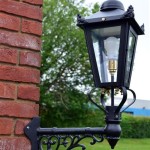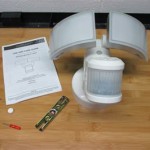How to Waterproof Outdoor Cushions
Outdoor cushions are a popular addition to any patio, deck, or porch, but they can be susceptible to damage from the elements. Frequent rain, humidity, and spills can leave cushions damp, moldy, and uncomfortable. While some cushions are inherently water-resistant, others require additional waterproofing measures. This article provides a comprehensive guide to waterproofing outdoor cushions, ensuring they remain durable and inviting for years to come.
1. Choosing the Right Cushion Fabric
The first step towards creating waterproof cushions is selecting the appropriate fabric. Many outdoor cushion materials are inherently resistant to moisture, while others are more susceptible. For maximum protection, consider fabrics with these characteristics:
- Acrylic: Acrylic fabrics are known for their water-repellent properties, making them ideal for outdoor cushions. They are also fade-resistant and easy to clean.
- Polyester: Polyester is another durable and water-resistant option. It is also often blended with other fibers, such as cotton, for added comfort.
- Olefin: Olefin is a synthetic fiber renowned for its exceptional water and stain resistance. It is also fade-resistant and mildew-resistant.
- Sunbrella: Sunbrella is a popular brand of acrylic fabric specifically designed for outdoor use. It is known for its exceptional durability, fade resistance, and water repellency.
When choosing a cushion fabric, consider the level of exposure to moisture and the desired level of protection. While some fabrics provide inherent water resistance, others may require additional waterproofing techniques.
2. Applying a Waterproofing Spray
A waterproof spray can be an effective way to protect outdoor cushions from moisture. It is applied to the fabric surface and creates a protective barrier that repels water and other liquids. When selecting a waterproof spray, look for one specifically designed for outdoor fabrics and ensure it is mildew and UV resistant. This helps prevent the growth of mold and mildew, as well as fading from prolonged sun exposure.
To apply the spray, follow the manufacturer's instructions carefully. Typically, it involves shaking the spray bottle, holding it approximately 8-12 inches from the cushion fabric, and spraying evenly over the surface. Allow the spray to dry completely before using the cushions.
For optimal results, apply a fresh coat of waterproof spray every 3-6 months, depending on the level of exposure to the elements and the frequency of use.
3. Using Waterproof Cushion Covers
Another effective method of protecting outdoor cushions from moisture is using waterproof cushion covers. These covers are designed to create a barrier between the cushion fabric and the elements, keeping them dry and protected. They are available in various styles and materials, including polyester, vinyl, and canvas. When selecting waterproof cushion covers, choose one that is breathable to prevent moisture buildup and mold growth.
Waterproof cushion covers are particularly practical for cushions exposed to frequent rain or spills. They can be easily removed for washing or drying, ensuring the cushions remain clean and fresh. Some covers are also designed with zippers or snaps for easy access and convenient cleaning. Choose covers that fit snugly over the cushions to prevent water and moisture from seeping through the edges. This helps ensure maximum protection from the elements.
4. Storing Cushions Properly
Proper storage is essential for maintaining the longevity of outdoor cushions. When not in use, store cushions in a dry and well-ventilated space. Avoid storing them in damp or humid areas, as this can encourage mold growth. Consider investing in storage bags or boxes specifically designed for outdoor cushions, providing an extra layer of protection from moisture and dust.
To keep cushions dry after a rainy day, allow them to air dry completely before storing them. For faster drying, consider using a fan or placing the cushions in a well-ventilated area. Avoid storing cushions in direct sunlight, as this can lead to fading and damage.
5. Regularly Cleaning and Maintaining Cushions
Regular cleaning is essential for maintaining the water-resistant properties of outdoor cushions. To prevent the buildup of dirt, debris, and mold, clean cushions regularly using a mild soap and water solution. Avoid harsh chemicals or bleach, as these can damage the fabric. If the cushions have been exposed to moisture, allow them to dry completely before storing them.
For cushions with removable covers, launder them periodically according to the manufacturer's instructions. Be sure to dry them completely before replacing them on the cushions.
By following these steps and incorporating proper maintenance practices, you can ensure your outdoor cushions remain comfortable, inviting, and protected from the elements for years to come.

How To Waterproof Outdoor Cushions A Erfly House

How To Waterproof Outdoor Cushions 5 Easy Steps Posh Living

Your Complete Guide To Waterproof Outdoor Cushions Fig Leaf

How To Waterproof Outdoor Cushions A Erfly House

How To Make Outdoor Waterproof Cushions Diy Setting For Four Interiors

How To Waterproof Outdoor Cushions A Erfly House

Do You Know How Outdoor Cushions Are Waterproof
Outdoor Waterproof Cushion Care Guide Bridgman Luxury Furniture

How To Waterproof Outdoor Cushions 5 Easy Steps Posh Living

Waterproof Cushion Cover Outdoor Patio Fabric Fade Proof Stain Resistant







